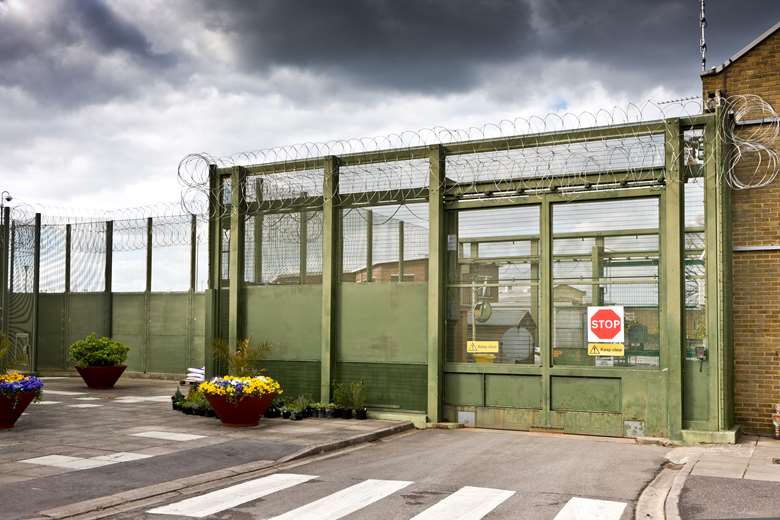Violence and self-harm in youth custody rise to record high
Neil Puffett and Joe Lepper
Friday, January 26, 2018
The use of restraint, number of assaults, and levels of self-harm among young people in custody have all risen to a new high despite ongoing efforts to improve safety, it has emerged.

Annual statistics published by the Youth Justice Board and Ministry of Justice show that in 2016/17 there were a total of 4,527 incidents of physical restraint - compared with 4,315 in 2015/16 - a rise of 4.9 per cent. The 2016/17 figure equates to a restraint rate of 32.1 per 100 young people held in custody - the highest figure on record.
Meanwhile, the number of self-harm incidents per 100 young people rose from 8.9 in 2015/16 to nine in 2016/17. In 2012 the figure stood at 5.1.
And the number of assaults per 100 young people rose from 19.3 in 2015/16 to 19.5 in 2016/17. The figure had been 9.8 in 2012.
The statistics show that 100 young people required medical treatment as after being restrained. Eight were so badly injured that they needed to be taken to hospital for treatment, while 92 were treated on site for "minor" injuries.
It is the first rise in the number of injuries caused by restraint in youth custody since 2012.
Meanwhile, the number of incidents of young people requiring medical treatment after self-harming rose by 75.1 per cent, from 193 in 2015/16 to 338 in 2016/17.
Among those injured through self-harm in 2016/17, 19 required hospital treatment, with the remaining 319 treated on site.
The figures also show that the use of solitary confinement has increased over the last year. The use of "single separation" in secure children's homes and secure training centres (STCs) has risen from a rate of 52.3 per 100 young people in 2015/16 to 93.9 in 2016/17.
The rise in restraint, assaults and self-harm comes despite the government pledging to take action on safety in custody amid ongoing concerns among inspectors and campaigners.
In March 2016, then Justice Secretary Michael Gove said action would be taken to tackle gang problems and improve safety in youth jails. Gove told members of the justice select committee that he had been working with Charlie Taylor, who was conducting a review of the youth justice system, and Michael Spurr, the chief executive of the National Offender Management Service, to address issues in the youth secure estate.
But, in July last year, the chief inspector of prisons warned that the current state of youth custody is so dangerous that tragedy is "inevitable" unless urgent action is taken.
The figures also reveal an increase in the reoffending rate among those convicted of an offence, which has risen by four per cent over the last 10 years. The 2016/17 rate of youth reoffending is 42.2 per cent, while the rate among adults is 28.2 per cent.
The proportion of young offenders who are black, Asian and minority ethnic (BAME) has also risen, by seven per cent over the last 10 years. A quarter (25 per cent) of all young people who received a caution or conviction in 2016/17 are BAME.
Elsewhere, the figures show that the number of first-time young offenders has fallen markedly, by 11 per cent between 2015/16 and 2016/17 and by 85 per cent over the past 10 years.
The number of children and young people in custody has also fallen, by seven per cent over the last year and by 74 per cent over the last decade.
"It seems oddly distressing that whilst the number of children entering the toxic environment of the penal system is falling, children are being treated even more violently," said Frances Crook, chief executive of the Howard League for Penal Reform.
"It can never be right that a child is held in isolation or adults use violence and pain to control them."
Carolyne Willow, director of children's rights charity Article 39, said: "The chief inspector of prisons said last year that not a single child prison is safe. These figures keep the alarm bells ringing, and act as a sad reminder that hundreds of frightened, hurt children in the care of the state remain in establishments that are simply incapable of meeting their needs."
A Ministry of Justice spokesman said: "The number of children entering the youth justice system for the first time continues to decline year on year and we now have a concentrated mix of young people in custody - many of whom demonstrate very challenging and complex behaviour.
"But we have been clear that current safety levels are unacceptable and there is much more to do. That is why we are investing an additional £64m to improve youth custody, including boosting the number of frontline staff in public sector Young Offender Institutions by 20 per cent - all of whom will be specially trained to work in the youth estate."




